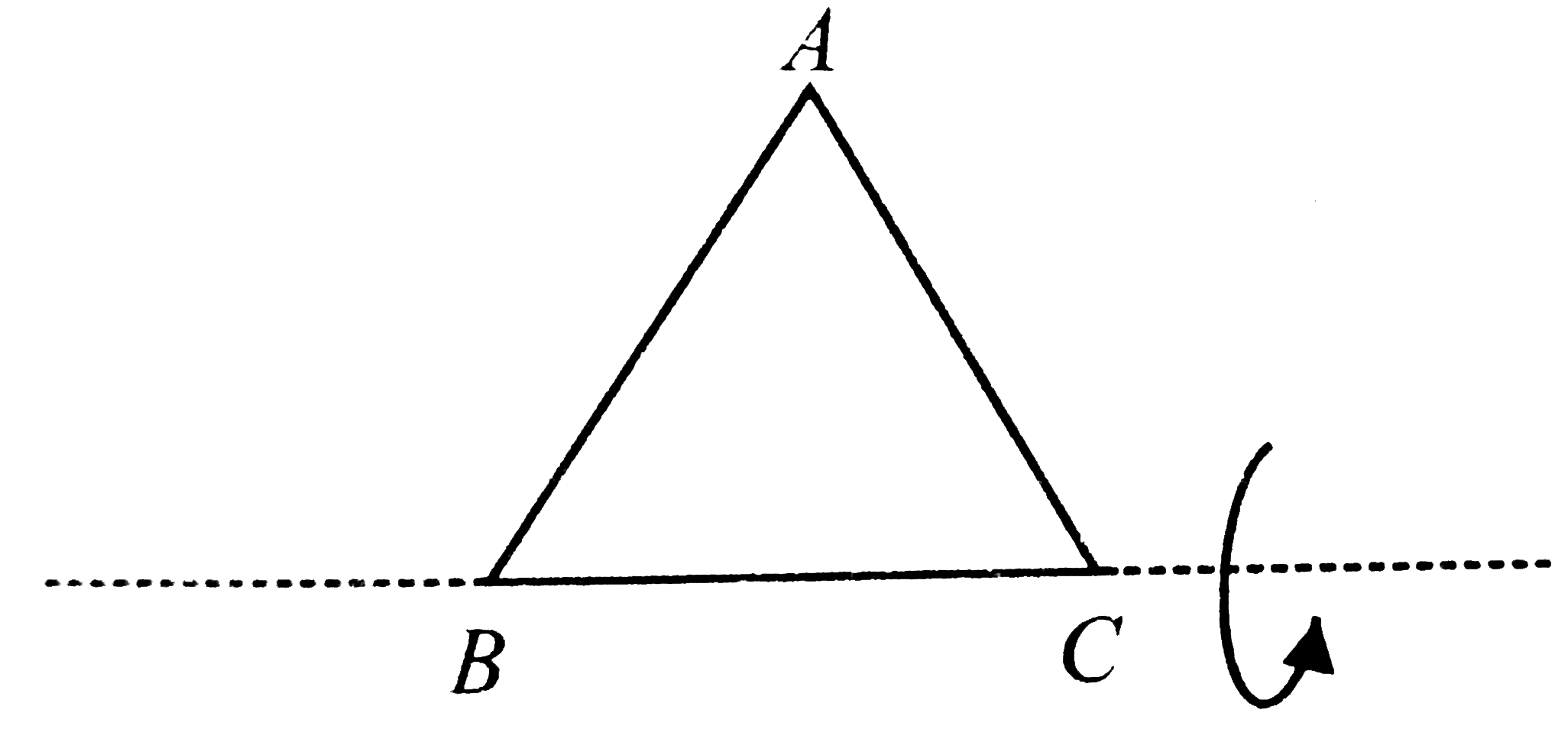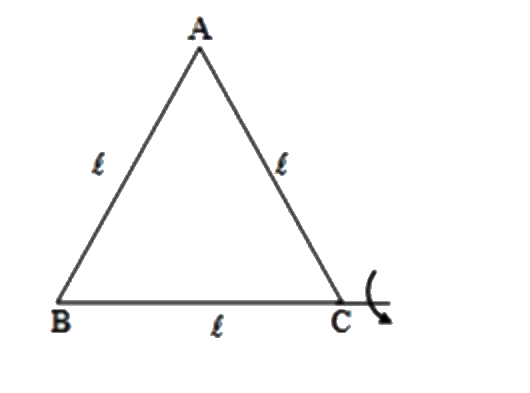Three uniform rods, each of mass M and length l, are connected to form an equilateral triangle in a gravity free space. Another small body of mass m is kept at the centroid. Find the minimum velocity v to be given to mass m so that it escapes the gravitational pull of the triangle.
To solve the problem of finding the minimum velocity v required for the mass m at the centroid of the equilateral triangle formed by three uniform rods to escape their gravitational pull, we will follow these steps:
Step 1: Understand the System
We have three uniform rods, each of mass M and length l, arranged in the form of an equilateral triangle. A small mass m is placed at the centroid of this triangle. The goal is to determine the minimum velocity v that needs to be imparted to mass m so that it can escape the gravitational influence of the rods.
Step 2: Calculate the Gravitational Potential Energy
The gravitational potential energy U of the mass m due to the rods needs to be calculated. The potential energy due to a small element of mass dm from one of the rods at a distance r from mass m is given by:
dU=−kmdmr
where k is the gravitational constant.
Step 3: Determine the Mass Element dm
Let λ be the mass per unit length of the rod. Thus, we have:
λ=Ml
For a small segment of the rod of length dx, the mass is:
dm=λdx=Mldx
Step 4: Calculate the Distance r
The distance r from the mass m at the centroid to the element dx on the rod can be calculated using the Pythagorean theorem. If a is the perpendicular distance from the centroid to the side of the triangle, then:
r=√a2+x2
Step 5: Integrate to Find Total Potential Energy
The total potential energy U from one rod can be found by integrating dU over the length of the rod. Since the triangle is symmetric, the total potential energy from all three rods is three times the potential energy from one rod.
U=3∫l/20−kmMldx√a2+x2
Step 6: Solve the Integral
The integral can be solved, and we find:
U=−6kmMlln(l+√l2+4a2)
Step 7: Apply Energy Conservation
For the mass m to escape the gravitational pull, the kinetic energy K must be equal to or greater than the potential energy U:
12mv2≥|U|
Substituting the expression for U:
12mv2≥6kmMlln(l+√l2+4a2)
Step 8: Solve for Minimum Velocity v
Cancel m from both sides and solve for v:
v2≥12kMlln(l+√l2+4a2)
Thus, the minimum velocity v is given by:
v=√12kMlln(l+√l2+4a2)
Final Answer
The minimum velocity v required for mass m to escape the gravitational pull of the triangle is:
v=√12kMlln(l+√l2+4a2)
We have three uniform rods, each of mass M and length l, arranged in the form of an equilateral triangle. A small mass m is placed at the centroid of this triangle. The goal is to determine the minimum velocity v that needs to be imparted to mass m so that it can escape the gravitational influence of the rods.
The gravitational potential energy U of the mass m due to the rods needs to be calculated. The potential energy due to a small element of mass dm from one of the rods at a distance r from mass m is given by:
Let λ be the mass per unit length of the rod. Thus, we have:
The distance r from the mass m at the centroid to the element dx on the rod can be calculated using the Pythagorean theorem. If a is the perpendicular distance from the centroid to the side of the triangle, then:
The total potential energy U from one rod can be found by integrating dU over the length of the rod. Since the triangle is symmetric, the total potential energy from all three rods is three times the potential energy from one rod.
The integral can be solved, and we find:
For the mass m to escape the gravitational pull, the kinetic energy K must be equal to or greater than the potential energy U:
Cancel m from both sides and solve for v:
The minimum velocity v required for mass m to escape the gravitational pull of the triangle is:
Similar Questions
Knowledge Check
Three masses each of mass m are palced at the vertices of an equilateral triangles ABC of side l as shown in figure. The force acting on a mass 2m placed at the centroid O of the triangle is
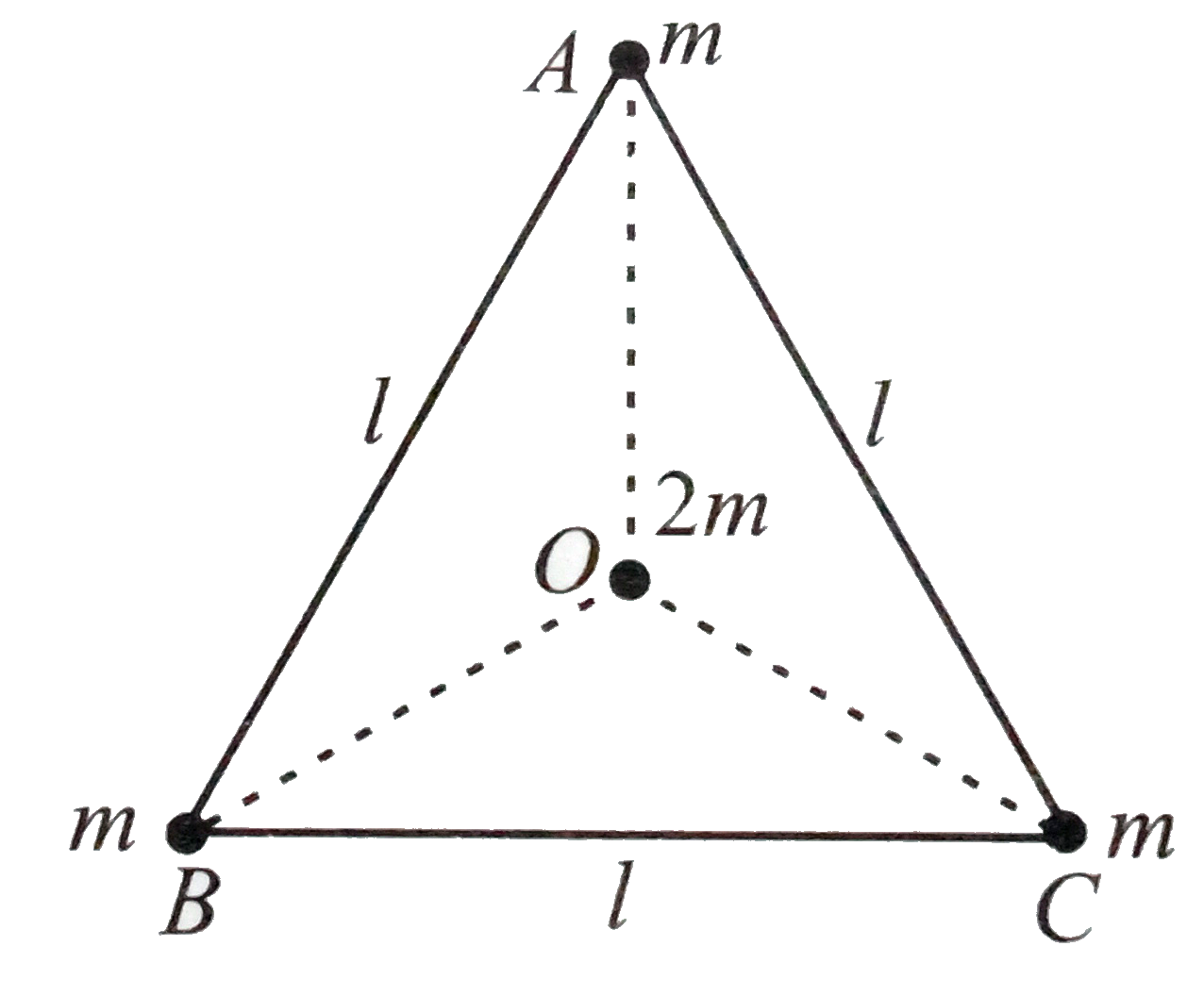 AzeroB3Gm2l2C5Gm2l2D7Gm2l2
AzeroB3Gm2l2C5Gm2l2D7Gm2l2
Three mass points each of mass m are placed at the vertices of an equilateral tringale of side l. What is the gravitational field and potential due to three masses at the centroid of the triangle ?
View SolutionThree mass points each of mass m are placed at the vertices of an equilateral triangle of side 1. What is the gravitational field and potential due to the three masses at the centroid of the triangle ?
View SolutionThree particles each of mass m are kept at vertices of an equilateral triangle of side L. The gravitational field at centre due to these particle is
View Solution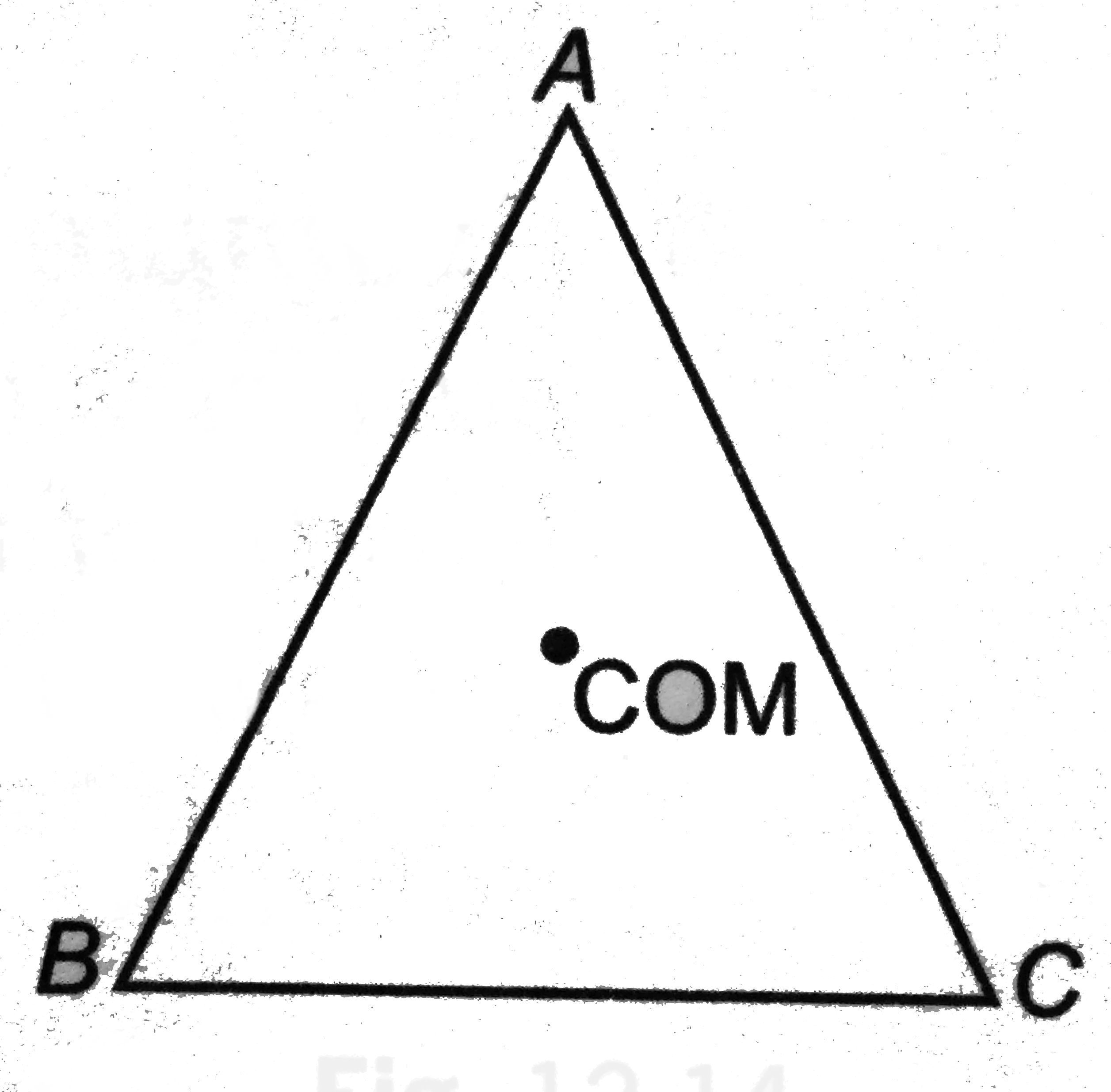
Three rods each of mass m and length l are joined together to form an equilateral triangle as shown in figure. Find the moment of inertial of the system about an axis passing through its centre of mass and perpendicular to the plane of the particle.
View Solution
Three rods each of mass m and length l are joined together to form an equilateral triangle as shown in figure. Find the moment of inertial of the system about an axis passing through its centre of mass and perpendicular to the plane of the particle.
View SolutionThree equal masses each of mass 'm' are placed at the three-corner of an equilateral triangle of side 'a'
If a fourth particle of equal mass is placed at the centre of triangle, then net force acting on it, is equal to
View SolutionThree particle each of mass m are placed at the corners of equilateral triangle of side l
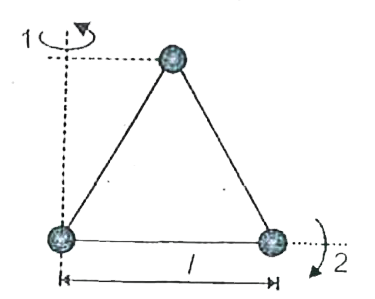
Which of the following is/are correct ?
View Solution

